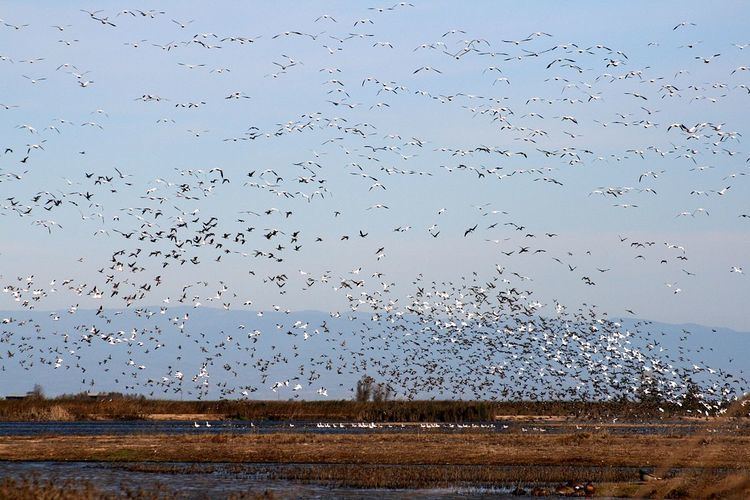Nearest city Willows, California Established 1937 | Phone +1 530-934-2801 | |
 | ||
Location Glenn and Colusa Counties, California, United States Area 10,819 acres (43.78 km) Governing body U.S. Fish and Wildlife Service Website Sacramento National Wildlife Refuge Address Sacramento National Wildlife Refuge, 752 County Rd, Willows, CA 95988, USA Management United States Fish and Wildlife Service Similar Colusa National Wildlife R, Delevan National Wildlife R, Sutter National Wildlife R, Yolo Bypass Wildlife A, Modoc National Wildlife R Profiles | ||
Pintail ducks flee from falcon at sacramento national wildlife refuge complex
The Sacramento National Wildlife Refuge Complex is part of the United States system of National Wildlife Refuges (NWR). It is located in northern California, in the valley of the Sacramento River.
Contents
- Pintail ducks flee from falcon at sacramento national wildlife refuge complex
- Sacramento national wildlife refuge complex
- History and components
- Ecology
- References
The Sacramento NWR Complex was created in an attempt to resolve the conflict between the needs of migrating birds using the Pacific Flyway, and those of agriculture.
The Sacramento NWR Complex headquarters and visitor center is located in the 10,819-acre Sacramento National Wildlife Refuge off of 99W, and features a wildlife exhibit, bookstore, and Discovery Room. Visitors can enjoy a six-mile auto tour with 3 viewing area and two walking trails.
Sacramento national wildlife refuge complex
History and components
Before the arrival of European settlers in the 19th century, much of the Sacramento valley was taken up by seasonal wetlands and grasslands. By the beginning of the 20th century, much of this had been replaced by farmland, particularly for the growing of rice, and the rivers no longer create new wetlands because their flow is controlled by levees and irrigation schemes. Less than 10% of the original wetland area remains. Migrating birds have continued to use the area, and resting in the rice fields, consumed considerable quantities of the crop.
In 1937, the United States Fish and Wildlife Service, with the aid of the Civilian Conservation Corps, began the process of creating a refuge within dry, alkaline lands between the towns of Willows and Maxwell. This was the original Sacramento NWR. From the 1940s onward, additional refuges were created, so that the Sacramento NWR Complex now includes the following refuges, located between 80 and 145 kilometres (50 and 90 mi) north of the city of Sacramento:
The total area of the refuges is about 140 square kilometres (35,000 acres)s).
Ecology
The water flows in the refuge have to be controlled artificially, and the vegetation has to be managed actively through irrigation and burning, to ensure that the wetlands remain productive, and provide adequate food and resting places for the birds. Between them, the refuges provide a range of habitats: seasonal marshes, uplands, permanent ponds, and riparian areas.
The refuges are provided with facilities for visitors, though these have to be limited to avoid conflict with their primary purpose of conservation. The layout of the wetlands has been planned to allow visitors a good view of the birds while minimising the risk of disturbance to them. There is a visitor's center at the Sacramento NWR, and routes for car tours on the Sacramento and Colusa sites, though visitors are allowed to leave their cars only at selected sites. There are walking trails at both those sites and also at the Sacramento River site. Limited hunting is permitted on some of the sites.
Over 300 species of birds and mammals use the refuges, not all of them migratory. Among those most likely to be seen by visitors (depending on season) are:
The Sacramento National Wildlife Refuge Complex boasts a diverse flora, even though large amounts of the historic wetland has been destroyed. Among the diverse wildflowers present is the yellow mariposa lily, Calochortus luteus.
